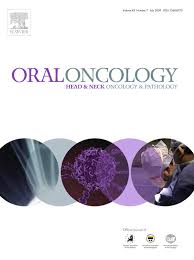Factors associated with restricted mouth opening and its relationship to health-related quality of life in patients attending a Maxillofacial Oncology clinic
Abstract
Trismus can be a problematic consequence of treatment for oral and oropharyngeal cancer. The aim of this study was to investigate the relationship between trismus, subjective function and health-related quality of life, in order to postulate a clinically relevant cut-off that might be useful as an indicator of patients who might benefit from intervention. One hundred consecutive patients attending the Maxillofacial Oncology clinic at the University Hospital Aintree were assessed during a period of four months. Mouth opening was recorded in millimetres. Subjective outcomes were evaluated using UW-QOL questionnaire for chewing, saliva, mood, anxiety and overall quality of life. The median age of patients was 63 (IQR 56-69) years. The median time since treatment was 16 (IQR 6-34) months. The median mouth opening (32 mm; range 6-53, IQR 24-40) was associated strongly with clinical T stage (Tis/T1-2 35 mm, T3-4 24 mm), radiotherapy (no 38 mm, yes 27 mm) and type of primary surgery (primary closure 38 mm, soft-tissue flaps 30 mm, composite flaps 24 mm). The amount of mouth opening and of the single question (about how much less mouth opening since treatment) was significantly associated with patients perception of chewing deficit, less than full diet and less than good overall quality of life. This study supports a 35 mm cut-off for trismus. There is merit including the two elements together (opening in mm and the single item question on mouth opening since treatment) as outcome parameters.

